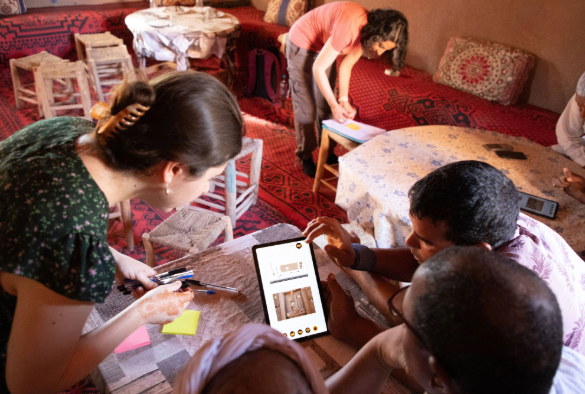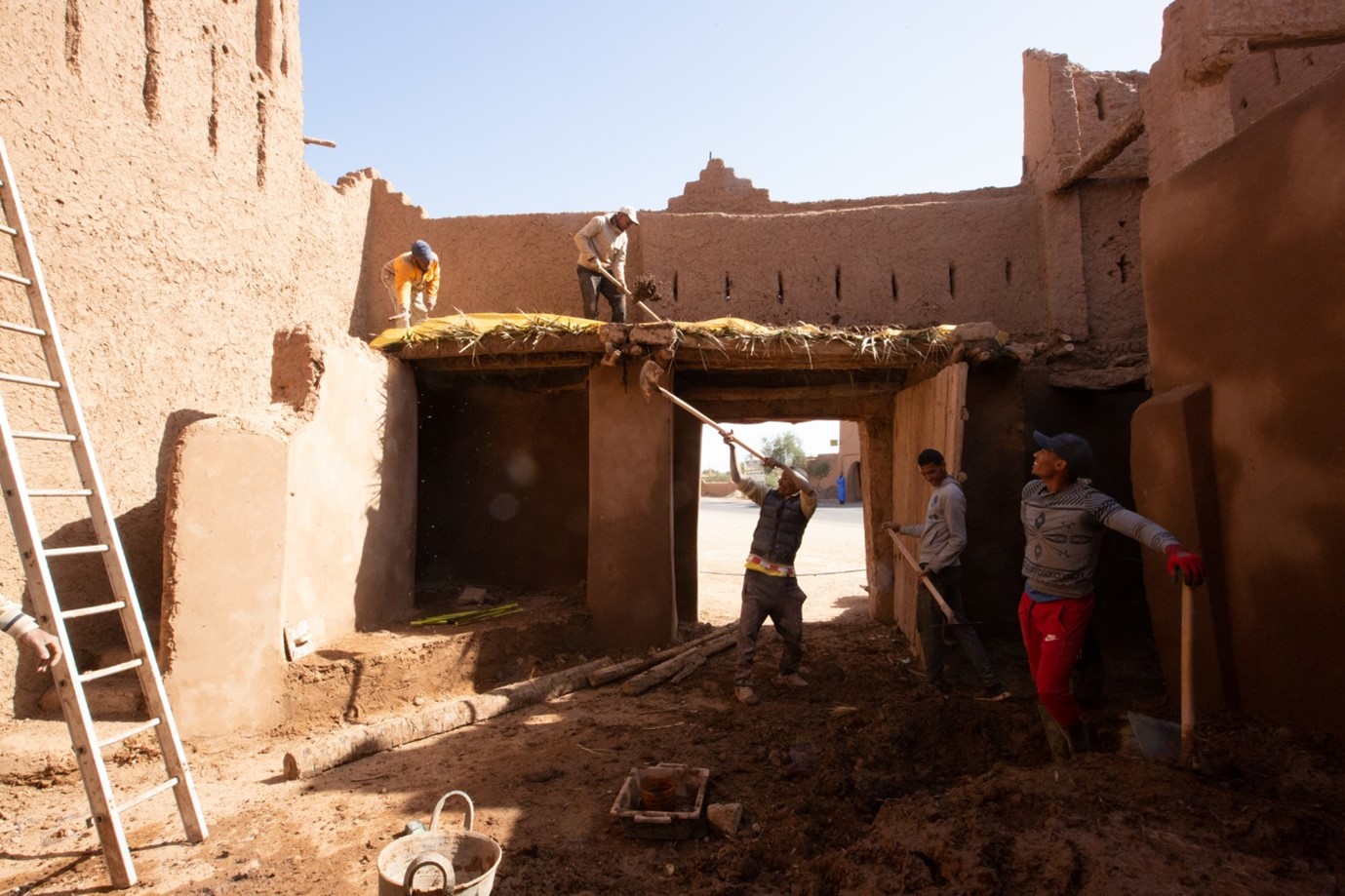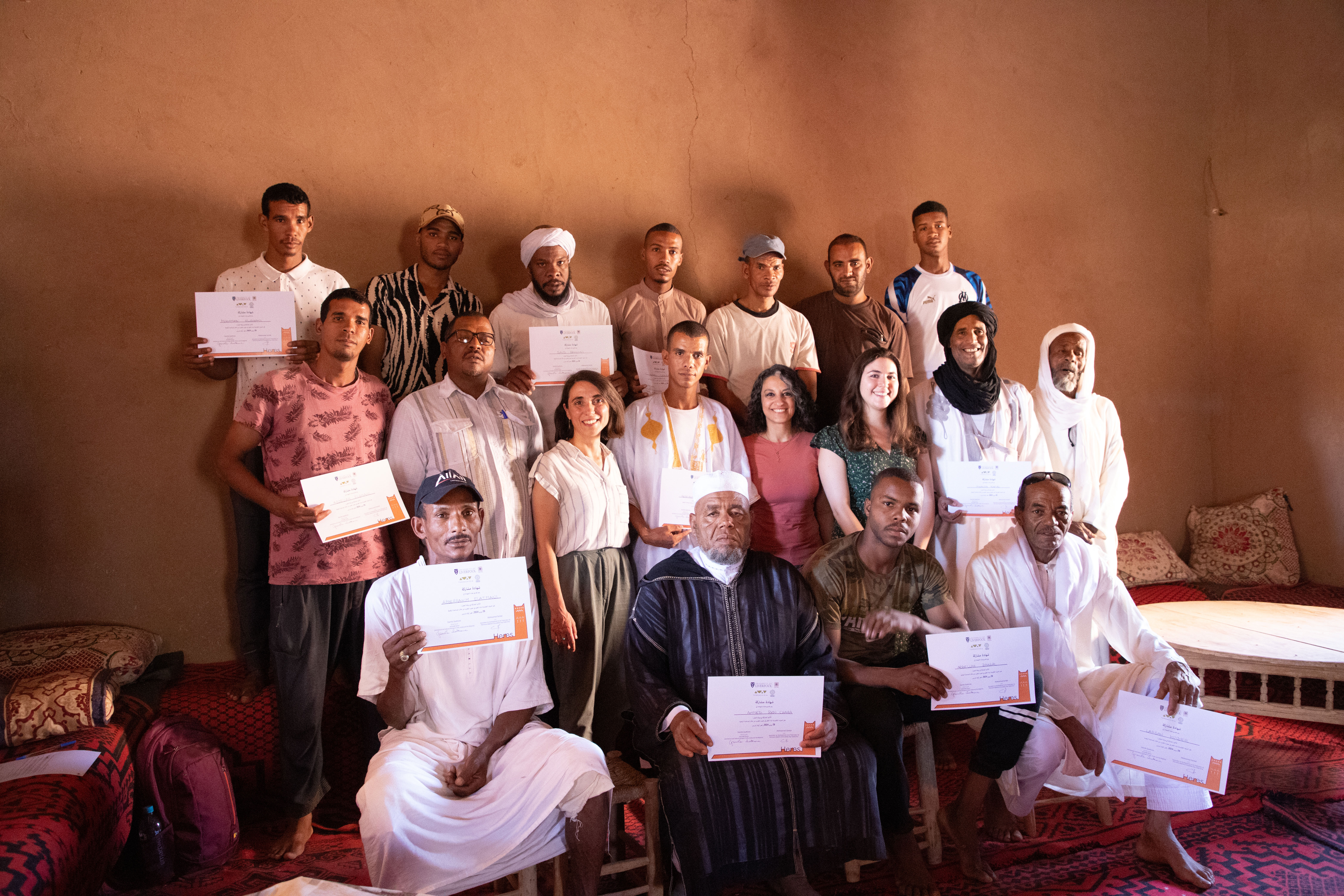School of Architecture supports earth-built heritage resilience in Morocco
Published on

Researchers from the University of Liverpool’s School of Architecture have developed a unique open access resource to support traditional earth building in Southern Morocco. This risks becoming extinct due to youth migration and preference for modern methods using concrete, which are less environmentally friendly.
Working with communities in M’Hamid Oasis, a team from the ArCHIAM Centre has developed a digital, interactive, multimedia construction manual, Heres, which documents the traditional earth building techniques used in the region so that these can be easily replicated in the future. It also sheds light on the socio-cultural and religious practices associated with their execution as well as the hidden role played by women. Available in both English and Moroccan Arabic, designed as a flipbook and conceived as an e-publication, Heres can be navigated offline on touch screen devices.
Within Heres, videos of the techniques are available to watch, complemented by step-by-step guidance to each of the processes. Through a catalogue of key technical details Heres also assists the design, planning and execution of earth construction, thus making it more apt to withstand the test of time, change and natural events.
[embed]https://player.vimeo.com/video/1005459736?badge=0&autopause=0&player_id=0&app_id=58479[/embed]
Previously, knowledge of traditional building methods had only been passed down from generation to generation through word of mouth and learning by doing. This is the first time that a digital resource which is available to all has been created to record the invaluable knowledge for communities in one easily accessible place.
To develop Heres the researchers documented on-site live demonstrations from craftsmen and recorded interviews with master builders. The knowledge co-creation process took place as part of an international restoration and documentation workshop organised by Terrachidia, an NGO based in Spain which works to protect and revitalize cultural heritage, with the support of COAC (Collegi d’Arquitectes de Catalunya) and the University of Liverpool.

The research participants were later involved in a workshop organised with Ksar Ouled Driss heritage association to verify the content of the flipbook and test its technical capabilities.
The project, entitled ‘Supporting Heritage Resilience: Digitally Aided Transmission of Traditional Earth Building Crafts in Southern Morocco’, was funded by Research England through a Participatory Research Fund Award.
Dr Giamila Quattrone, Co-Director of ArCHIAM and Principal Investigator of the project said: “We’re so pleased to have worked with the traditional builders of M’Hamid Oasis and our NGO partner to produce a digital resource which is meant to keep traditional earth-built heritage alive.
“It’s fantastic to see the enthusiastic involvement of local communities in a heritage project that can improve skills and revitalise crafts which are at risk of disappearance. Safeguarding the traditional material knowledge of this place is as critical as conserving the distinctive architecture born out of it. It’s only by supporting the transmission and application of the former that we can ensure the survival of the latter.”

Terrachidia President Carmen Moreno Adán said: “ArCHIAM's collaboration with Terrachidia in the preservation of the cultural heritage of M'Hamid Oasis has meant, without a doubt, a great leap towards professionalization and technical rigour in the documentation of this heritage.
“It has been an opportunity to bring the University of Liverpool’s world-leading heritage research closer to the reality of the rural areas of southern Morocco, and specifically to its traditional villages, where collaboration and knowledge exchange have been enriching for all parties.
“With the flipbook, ArCHIAM and Terrachidia have gone one step further in their attempt to learn about, preserve and disseminate the traditional construction techniques of the oasis and, more broadly, its unique culture through authentic intercultural dialogue.”
Professor Soumyen Bandyopadhyay, Director of ArCHIAM and of the University of Liverpool’s Heritage Institute and project Co-Investigator, said: “We’re delighted that this unique project makes such a significant contribution to the Heritage on the fringes and Digital heritage futures pillars of our Heritage Institute.
“The safeguarding of heritage cannot happen without the involvement of local communities, and we look forward to undertaking similar projects elsewhere in the region and the wider world.”